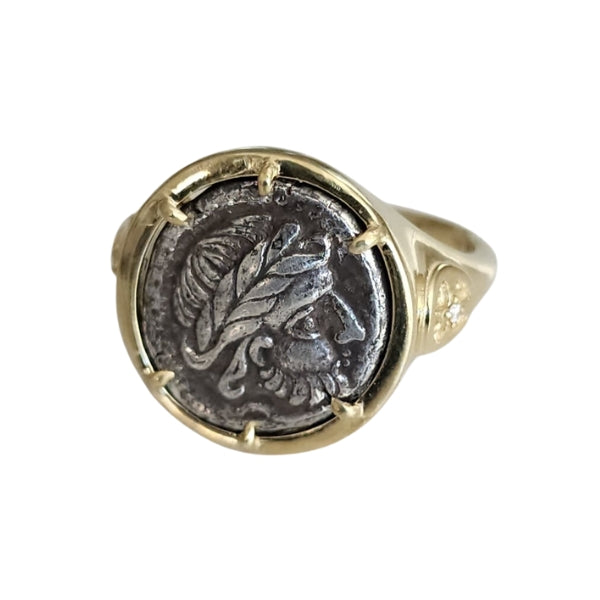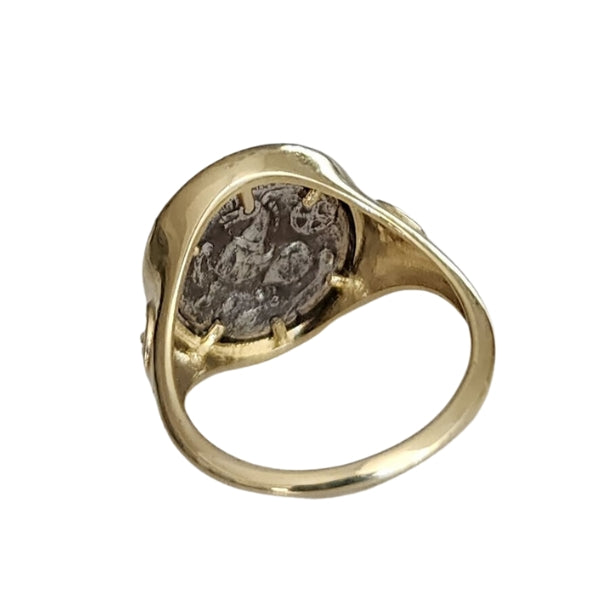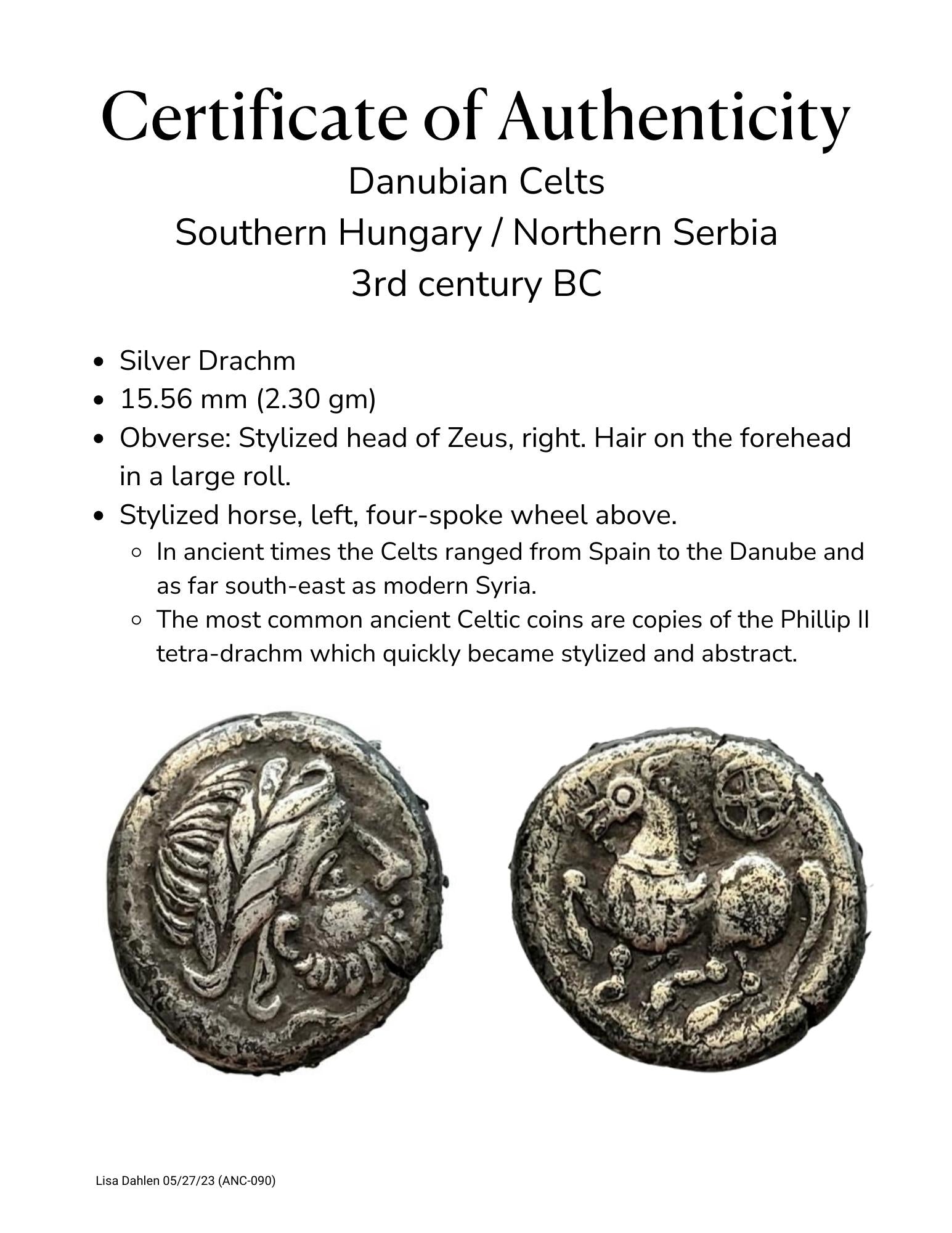


Celtic Danube Silver Coin Zeus circa 200 BC (090)
This is an ancient silver Celtic coin from the Danube region. It features a beautifully detailed depiction of Zeus, including his beard and the laurel braided around his head. The coin is known as Kegelwange, which means "round cheeks" in German, referring to the pleasingly plump cheeks of Zeus on the coin.
18kt gold ring with accent diamonds
Size 7 (can be resized)
One of a kind with a Certificate of Authenticity.
Grade: VF and a scarce variety (David R. Sear)
Dated: circa 200 BCE
Choose options



This is an ancient silver Celtic coin from the Danube region. It features a beautifully detailed depiction of Zeus, including his beard and the laurel braided around his head. The coin is known as Kegelwange, which means "round cheeks" in German, referring to the pleasingly plump cheeks of Zeus on the coin.
18kt gold ring with accent diamonds
Size 7 (can be resized)
One of a kind with a Certificate of Authenticity.
Grade: VF and a scarce variety (David R. Sear)
Dated: circa 200 BCE
